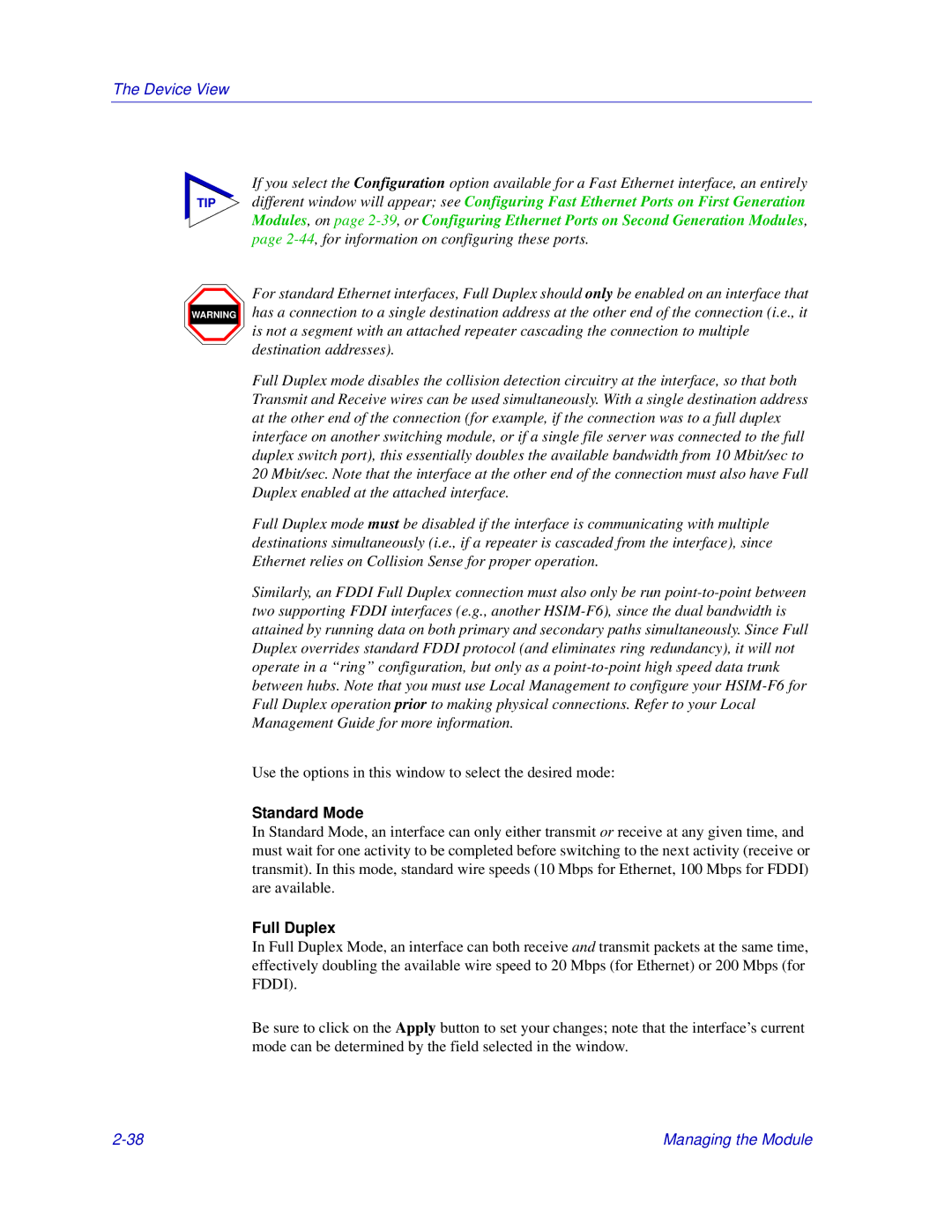
The Device View
TIP
WARNING
If you select the Configuration option available for a Fast Ethernet interface, an entirely different window will appear; see Configuring Fast Ethernet Ports on First Generation Modules, on page
For standard Ethernet interfaces, Full Duplex should only be enabled on an interface that has a connection to a single destination address at the other end of the connection (i.e., it is not a segment with an attached repeater cascading the connection to multiple destination addresses).
Full Duplex mode disables the collision detection circuitry at the interface, so that both Transmit and Receive wires can be used simultaneously. With a single destination address at the other end of the connection (for example, if the connection was to a full duplex interface on another switching module, or if a single file server was connected to the full duplex switch port), this essentially doubles the available bandwidth from 10 Mbit/sec to 20 Mbit/sec. Note that the interface at the other end of the connection must also have Full Duplex enabled at the attached interface.
Full Duplex mode must be disabled if the interface is communicating with multiple destinations simultaneously (i.e., if a repeater is cascaded from the interface), since Ethernet relies on Collision Sense for proper operation.
Similarly, an FDDI Full Duplex connection must also only be run
Use the options in this window to select the desired mode:
Standard Mode
In Standard Mode, an interface can only either transmit or receive at any given time, and must wait for one activity to be completed before switching to the next activity (receive or transmit). In this mode, standard wire speeds (10 Mbps for Ethernet, 100 Mbps for FDDI) are available.
Full Duplex
In Full Duplex Mode, an interface can both receive and transmit packets at the same time, effectively doubling the available wire speed to 20 Mbps (for Ethernet) or 200 Mbps (for FDDI).
Be sure to click on the Apply button to set your changes; note that the interface’s current mode can be determined by the field selected in the window.
Managing the Module |
